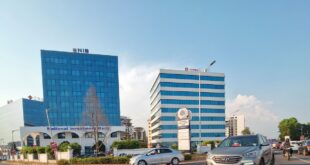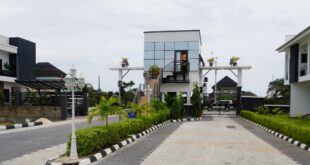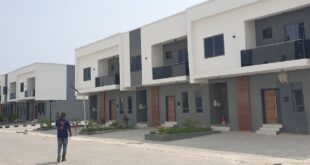By Cathy Smith, Managing Director at SAP Africa
Are African enterprises at risk of extinction, just as millions of natural species face extinction due to the impact of climate change?
Businesses and countries across the continent are attempting to rebuild following the devastating economic impact of the pandemic. It is perhaps an opportune time to take stock of whether we are rebuilding in a way that will ensure our sustainability in the long term, both economically and environmentally.
A missed opportunity to ‘build back better’
When economic activity tapered down in 2020 due to the lockdowns implemented around the world to curb the spread of the coronavirus, researchers noted a drop in global emissions. For a moment, it appeared that the pandemic would be a catalyst for a more sustainable and less environmentally harmful global economy.
However, our modern lifestyles – and in many cases the very basis of global economic activity – is undermining progress we made during the quieter periods of 2020. Environmentalists decried a sharp increase in deforestation last year, despite the slowdown in overall economic activity. New research also found that the average meat-eating, coffee-drinking Westerner is responsible for the loss of four trees every year as forests are cleared for cattle and high-profit crops.
Recent data indicates that the volume of greenhouse gas emissions will continue to grow unless there is a change in policy and, critically, a change in business practices. So far, we have not risen to the occasion with commendable urgency.
A recent Oxford study found that only $368 billion of the $14.6 trillion in recovery spending during 2020 was green, with one study author saying the findings are “a wake-up call”.
Africa is expected to be one of the hardest-hit continents in terms of climate change. Our reliance on agriculture, outdated or lacking infrastructure and low levels of development leave us more vulnerable than many of the more developed regions.
Our business sector is also at risk.
Outdated business models at risk of extinction
In the mid-2000s, as digital technologies and social media started entering the mainstream, analysts and industry experts dedicated vast amounts of column-inches to predicting which products and business models would not survive the digital revolution. One article from 2007, for example, predicted the demise of several types of businesses, including record stores and newspapers.
Many of the predictions were correct: record stores were first disrupted by iTunes and then, more recently, by streaming services. Most have shut doors. Newspapers, although still very much around, look vastly different, with the bulk of newsroom efforts going into digital platforms. Many other types of businesses have had to either reinvent themselves or close down.
The point of the predictions was that, barring some miracle intervention, these business models would go extinct due to a combination of technology, innovation and changing consumer habits. Bear in mind that these predictions were made during a period of relative calm, before the global financial crisis of 2008.
Fast-forward to today, and I would argue you could list hundreds, even thousands of business models facing extinction. The accelerated pace of technological progress, the rise of the data-empowered consumer, the proliferation of smartphones, the changing climate and, recently, the unprecedented impact of the coronavirus pandemic have created the perfect storm of disruption and uncertainty.
As we collectively try to build back following the devastation of the pandemic, do we risk losing sight of our longer-term priorities, and could we be sacrificing sustainability at the altar of short-term profit?
In short, yes. But there is time to course-correct, albeit very little time.
Opposite of ‘extinction’ is ‘sustainability’
How can we as a business community respond to the dual challenge of economic and environmental sustainability?
Start by acknowledging that the opposite of extinction is sustainability, and build sustainability into the fabric of the business.
Business leaders should define a clear purpose and ensure that the purpose transcends narrow, short-term interest in favour of longer-term success. Develop a compelling vision – or reason-to-believe – around the purpose and bring it to life in all aspects of the business.
Reframe your business objectives away from short term wins and toward more sustainable, long-term outcomes. Realise that this requires a fundamental culture change and strong, visionary leadership.
For example, sales teams should look beyond quarterly sales targets and instead focus on developing closer relationships with customers with the aim of establishing constant exchanges of value over longer periods of time. Instead of slavishly working to generate shareholder value, take a more balanced view and strive for success across social, environmental and financial metrics, the so-called triple bottom line.
This may mean sacrifices in the short term, but will led to greater success in future and help foster closer collaboration between organisations and their customers. Most importantly, this requires that managers and business leaders support their teams in achieving longer-term targets, which in most cases depend on a shift in organisational culture.
Evaluate your supply chains and ensure that every partner, supplier and provider places the same premium on sustainability. Where possible, work with and support the growth of social enterprises, which are businesses built from the ground up with purpose and sustainability at their core.
Consider the role of technology in aligning everyday decisions to sustainable outcomes. For example, a data-driven customer experience management platform can help organisations better understand which sustainability levers work best with their customers. Digital supply networks can provide greater clarity over the sustainability scores of suppliers and bring greater transparency to supply chains.
Building intelligent enterprise capabilities that allow for the seamless integration of new technologies to a powerful digital core also gives organisations the flexibility and adaptability to overcome new challenges and act on business priorities quicker and with greater accuracy.
Driven by purpose and with greater agility and adaptability enabled by technology, African enterprises can switch from survival mode to long-term success while bringing the continent – and the world – closer to a more sustainable society, one that works for all.
But time is running out. We have to act today.
Article distributed by African Media Agency (AMA) on behalf of SAP Africa.
About SAP
SAP’s strategy is to help every business run as an intelligent enterprise. As a market leader in enterprise application software, we help companies of all sizes and in all industries run at their best: 77% of the world’s transaction revenue touches an SAP® system. Our machine learning, Internet of Things (IoT), and advanced analytics technologies help turn customers’ businesses into intelligent enterprises. SAP helps give people and organizations deep business insight and fosters collaboration that helps them stay ahead of their competition. We simplify technology for companies so they can consume our software the way they want – without disruption. Our end-to-end suite of applications and services enables business and public customers across 25 industries globally to operate profitably, adapt continuously, and make a difference. With a global network of customers, partners, employees, and thought leaders, SAP helps the world run better and improve people’s lives. For more information, visit www.sap.com.
 THE AFRICAN COURIER. Reporting Africa and its Diaspora! The African Courier is an international magazine published in Germany to report on Africa and the Diaspora African experience. The first issue of the bimonthly magazine appeared on the newsstands on 15 February 1998. The African Courier is a communication forum for European-African political, economic and cultural exchanges, and a voice for Africa in Europe.
THE AFRICAN COURIER. Reporting Africa and its Diaspora! The African Courier is an international magazine published in Germany to report on Africa and the Diaspora African experience. The first issue of the bimonthly magazine appeared on the newsstands on 15 February 1998. The African Courier is a communication forum for European-African political, economic and cultural exchanges, and a voice for Africa in Europe.


























